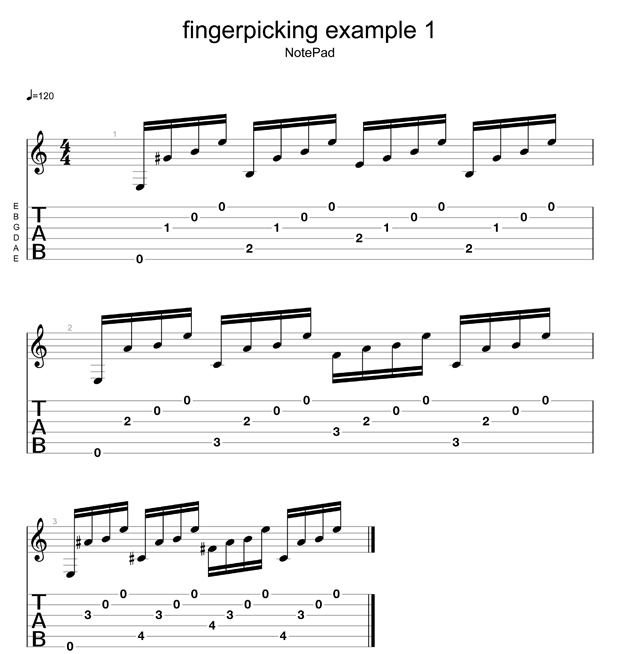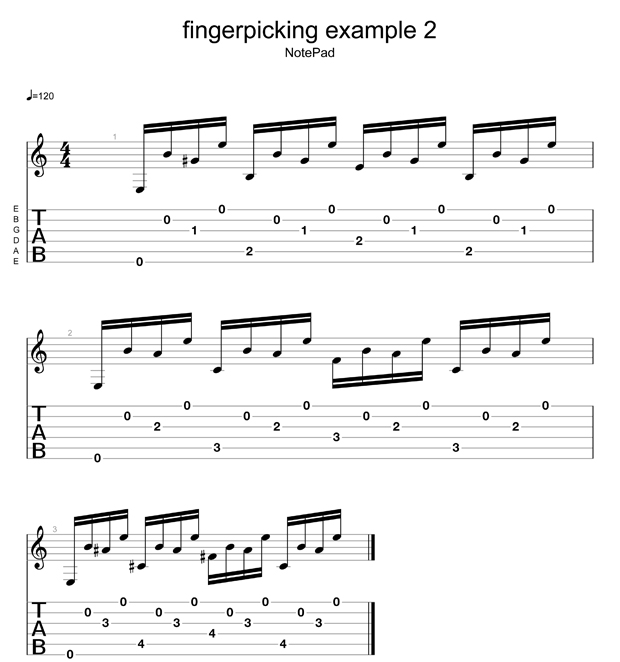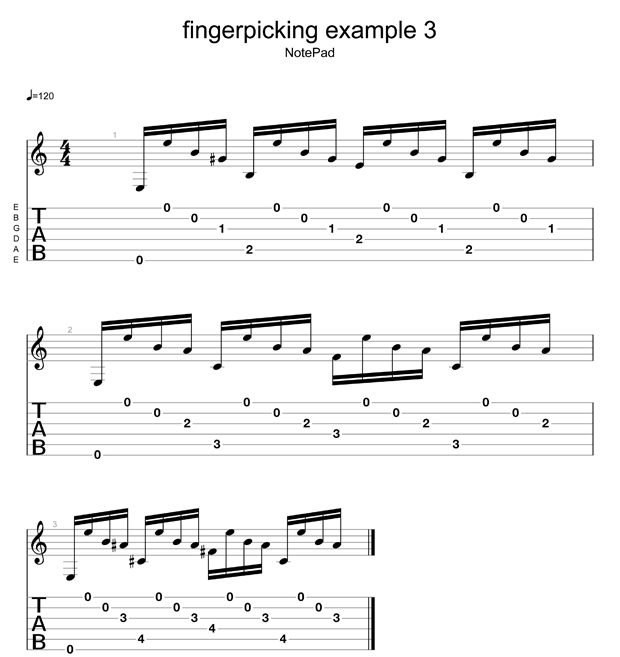The Complete Guitarist: Fingerpicking 101 and Beyond, Part 2

Hey there, fellow guitarists!
This week, I'd like to expand a bit upon my last column, in which I discussed some basic fingerpicking patterns.
We are going to take those basic patterns and expand upon them — but not with more right-hand patterns. This time, we will change the left hand.
In this exercise, we will keep the right-hand pattern/approach the same: The index, "i" finger, will be on the third string; the middle, "m" finger, will be on the second string; the ring, "a" finger, will be on the first string; the thumb, "p" finger, will bounce from the sixth, fifth, fourth and finally back to the fifth string.
The only challenge is that the E major chord we were playing in the left hand will move up one fret at a time once the pattern is completed. For example, play the pima pattern until completed, then move the E major chord up one fret, then play the pattern again until completed, then move the chord up another fret and play that pattern once again. Do this with all six patterns; pima, pmia, pami, piam, pmai and paim.
The challenge here is to disconnect your ear from what your right hand is playing. Since you will have open strings ringing everywhere, some of the harmonies will sound dissonant, and some of the notes will double themselves when playing these patterns. This will require extra focus on your part.
Examples 1, 2 and 3 below are the music and tabs for the pima, pmia and the pami patterns, but I suggest you add the other patterns I mentioned also. You get the idea. And as always, practice with a metronome, starting at a slow tempo, maybe about 80 bpm. Never sacrifice speed for accuracy!
In case you are inspired and want to continue with some fingerpicking studies, I highly recommend The Aaron Shearer Classical Guitar Method (books 1 and 2) and Pumping Nylon by Scott Tennant.
Once again, thank you for reading. Now pick up that guitar and play, just like yesterday. Get to work. As always, comments are always welcome and appreciated.



Guitarist Richard Rossicone is a veteran of the New York City and Long Island original and cover band scene. He's been playing since he was 8, when he attended his first concert (Kiss) and saw Pete Townshend smash a guitar. He has studied with various instructors over the years, which led him to a career in music therapy. He began his educational journey at Queensboro Community College, where the faculty introducing him to classical music. He received his associate's degree in fine arts in 1997 and went on to receive his bachelor's in music therapy in 2001 and his master's in music therapy from New York University in 2004. He's been Board Certified as a music therapist since 2002. Richard continued his studies at C.W. Post University, pursuing a second master's degree in classical guitar performance and music history, studying under Harris Becker. He's been teaching guitar, piano and theory since 2002 and in 2006 started his own company, Rossicone Music Studios. Visit him at Axgrinder.com and his Complete Guitarist Facebook page.
Get The Pick Newsletter
All the latest guitar news, interviews, lessons, reviews, deals and more, direct to your inbox!









![Joe Bonamassa [left] wears a deep blue suit and polka-dotted shirt and plays his green refin Strat; the late Irish blues legend Rory Gallagher [right] screams and inflicts some punishment on his heavily worn number one Stratocaster.](https://cdn.mos.cms.futurecdn.net/cw28h7UBcTVfTLs7p7eiLe.jpg)
